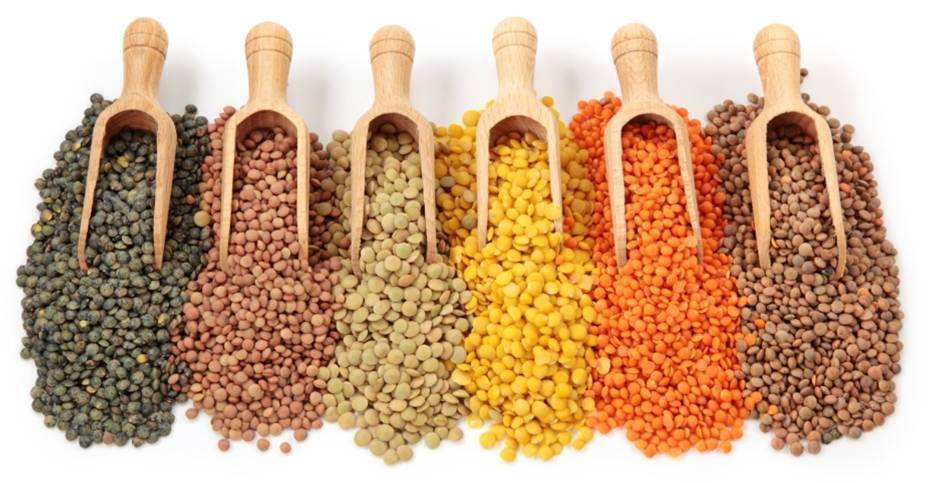Background
!!
India consumes around 23 million
metric tons (MMT) of pulses. This is an aggregate of a variety of pulses including
gram (chana), tur or arhar, mung, masur and urad. Pulses are the main source of
protein for a very large number of people in the country - each 100 grams
contains about 32 grams of proteins and several amino acids not made by the
body. So, it is an essential part of Indian meals. Naturally, India is the
largest producer and consumer of pulses in the world.
Phir kya
hua ?
But India's production of pulses has stagnated
at around 18-19 MMT for several years now. The shortfall between production and consumption is made up
by imports, mainly from Canada, Myanmar and some African countries.
This balance has been maintained at a huge cost to the people. A population growing at the rate of about 2% per year in the past decade should have quickly overtaken the pulses rate of growth which was less than half of that. This has not happened because the amount of pulses consumed per person has relentlessly declined over the past several decades.
This balance has been maintained at a huge cost to the people. A population growing at the rate of about 2% per year in the past decade should have quickly overtaken the pulses rate of growth which was less than half of that. This has not happened because the amount of pulses consumed per person has relentlessly declined over the past several decades.
From about 61 grams per person per day in 1951 to about 42 grams
in 2013.
This year the balance has been rudely and dramatically upset. In 2014-15, production of pulses was clocked in at 17.4 MMT - a decline of 2.4 MMT or 12% over the previous year.
This year the balance has been rudely and dramatically upset. In 2014-15, production of pulses was clocked in at 17.4 MMT - a decline of 2.4 MMT or 12% over the previous year.
This was caused by various factors
including
- unseasonal rains,
- pests,
- unprofitable prices for offered to farmers even as
import duties were waived.

Who are to
blamed for the price rise ? the TRADERS ?
- This decline appears to have been seized
as an opportunity to make a quick killing by traders - both
domestic and global.
- There are reports of pulses stocks lying
in warehouses at ports as traders wait it out and allow shortages to pump
up prices even more.
- And, exporters
in touch with producers from Canada (mainly lentil or masur), Myanmar
(mainly tur) and Australia (mainly chickpeas or Kabuli chana) have
hiked up the rates because India is the biggest player in the pulses
import market.
So, in 2014-15, India has imported 4.6 MMT
pulses, up 31% compared to the previous year. International prices have risen
in tandem from Rs 32 per kg to Rs 50 for chana, from Rs 56 to Rs 75 for lentil,
from Rs 40 to Rs 90 for tur, and from Rs 50 to Rs 77 for urad between October
2014 and August 2015 according to the latest agriculture ministry profile.
What is
government doing ?
· The government on its part is tinkering around
at the periphery by ordering about 7000 metric tonnes of pulses in the
international market and "invoking" the Rs.500 crore price stabilization fund to
subsidise transport of pulses stocks from ports to retailers. .... Plus raids on hoardings !!
What
experts suggest ?
Experts have called for a new impetus to pulses
production with new seeds, better pest control, better support prices and a
much better organized market so that the future expected requirement of pulses
can be met. Otherwise India faces a protein famine in the coming years.
Moral of the Story !!
- A lasting solution, of course, lies in
rationalising farm policy, with imports and exports as a vital ingredient
of it.
- Right now, with farmers getting Rs 15,000
per hectare of subsidies for growing wheat and rice, and none for pulses –
which actually helps fix nitrogen levels in the soil – it is obvious the
incentives structure is all wrong.
- Indeed, pulses have a double risk as they
are grown on largely unirrigated land (drought risk) and on most
occasions, with market prices falling below the minimum support price,
there is significant market risk as well.
- Instead of a difficult-to-run price
stabilization fund (temporary solution), it would be better to either
build up buffer stocks (long term solution) to prevent this kind of price
surge, or to give crop-neutral cash subsidies to wean farmers away from wheat
and rice.
- Any policy that does not address these
issues will have only a short term impact.

